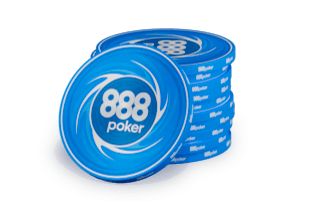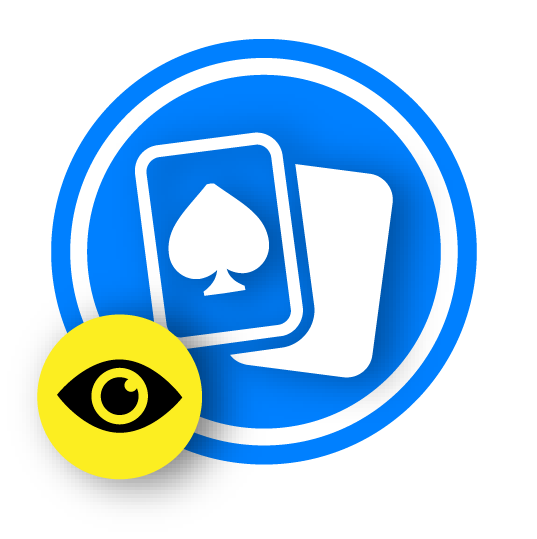Your seat stays the same, but your position changes every hand based on who has the dealer button. This affects your information, strategy, and decision-making at the table.
When there’s a non-playing dealer, a Button marks the dealer position. Play moves left-to-right around the table.
Position influences strategy because you might commit chips (via a blind) before seeing your cards. Acting early gives you less information; acting last gives you more control and more opportunities to steal blinds.
As you gain experience, you’ll see how position impacts win rates and overall decision-making confidence.
Texas Hold’em in 8 Simple Steps
- The dealer shuffles and deals cards to all players.
- In the pre-flop, you can fold, call, raise, or re-raise.
- The flop reveals three community cards — your first real chance to build a strong hand.
- The turn adds a fourth community card. You can check, call, fold, or raise.
- The river reveals the fifth and final community card.
- After the river, you build your strongest 5-card hand using hole cards + community cards.
- If more than one player remains, there’s a showdown.
- The best hand wins the pot — unless your bluff gets everyone to fold.
Games like Omaha follow a similar hand flow to Hold’em.
New to Poker? Start with the Basics
If you’re new to poker, begin with the fundamentals before moving to advanced strategy. Our guides walk you through everything step by step.
What Is Poker?
Poker is a family of card games where players try to make the strongest five-card hand or convince opponents they have it. Luck matters in the short term, but long-term success comes from strategy, reading situations, and smart betting.
How a Poker Hand Works
- Your goal is usually to make the strongest five-card hand.
- On your turn, you can bet, call, raise, or fold.
- You may fold at any point in the hand.
- If multiple players remain after betting ends, a showdown occurs.
- If everyone folds to your bet, you win without showing your cards.
Check our full poker rules guide — including hand rankings.
Understanding Poker Betting
Betting lets you apply pressure, extract value, bluff, and build pots. Each round gives you a new opportunity to evaluate your hand and how it compares to what opponents may be holding.
Your options:
- Check – skip betting until someone else opens.
- Open – make the first bet of the round.
- Fold – give up your hand and leave the pot.
- Call – match the current bet.
- Raise – increase the existing bet.
Players often announce actions verbally, but table taps (check) or sliding cards forward (fold) also signal decisions.
Poker Betting Etiquette
Certain behaviors are discouraged—like “string-betting” (placing chips in multiple motions) or acting before your turn. Clean, clear actions keep the game fair.
Poker Etiquette: Unwritten Rules
- Don’t act out of turn.
- Make your bet sizes clear.
- Don’t coach other players mid-hand.
How to Deal in Poker
In home games, players take turns dealing. Core basics:
- Shuffle thoroughly.
- Burn a card before flop/turn/river (if preferred).
- Deal one card at a time starting left of the Button.
- Hold’em uses two hole cards; Omaha uses four.
- Manage the pot and verify bet sizes.
- Announce the winning hand clearly.
Want More Poker Tips?
Once you’ve mastered the basics, explore our strategy and terminology guides to level up further.
Types of Poker
These are the most popular poker formats and what sets each one apart:
- Two hole cards.
- Up to five community cards.
- Make the strongest five-card hand.
- Four hole cards.
- Five community cards.
- Use exactly two hole cards and three community cards.
- Also known as Omaha 8 or Better.
- Pot split between the best high hand and qualifying low.
- Fast-fold format with instant new hands.
- Jump to a new table with new opponents after every fold.
- Ideal for fast-paced sessions.
- 3- or 4-handed Sit & Go with random prize-pool multipliers.
- A timer forces action — once it ends, players go all-in every hand.
- Jackpot-style, high-intensity gameplay.



